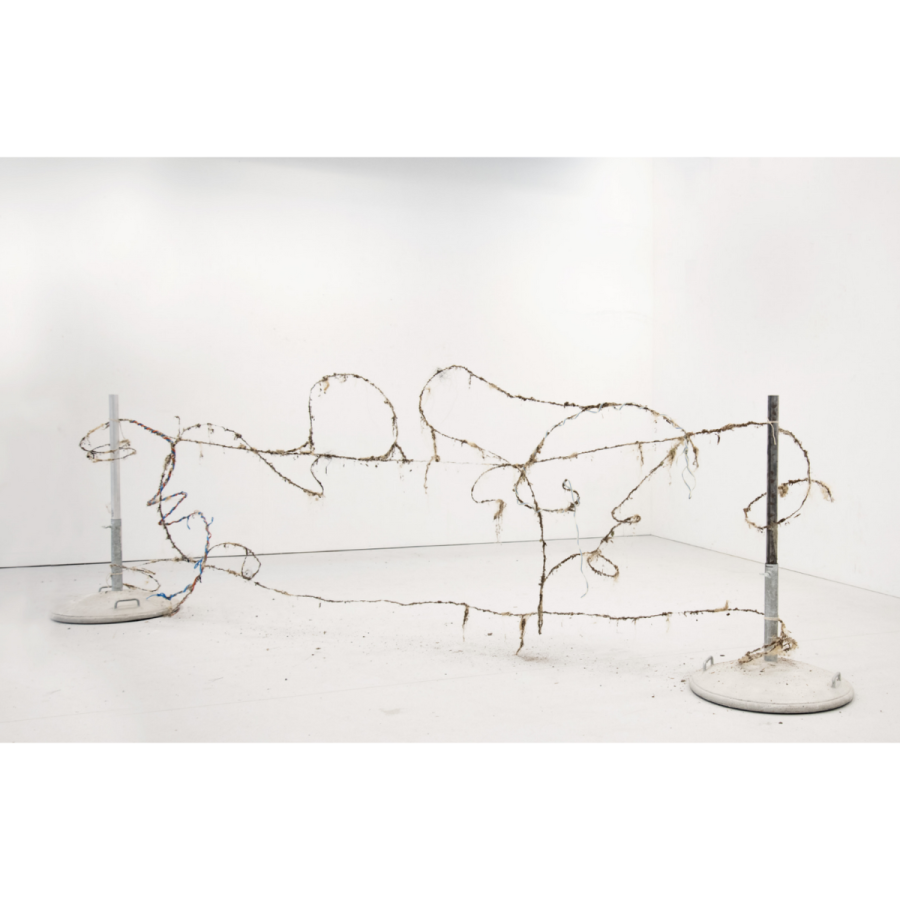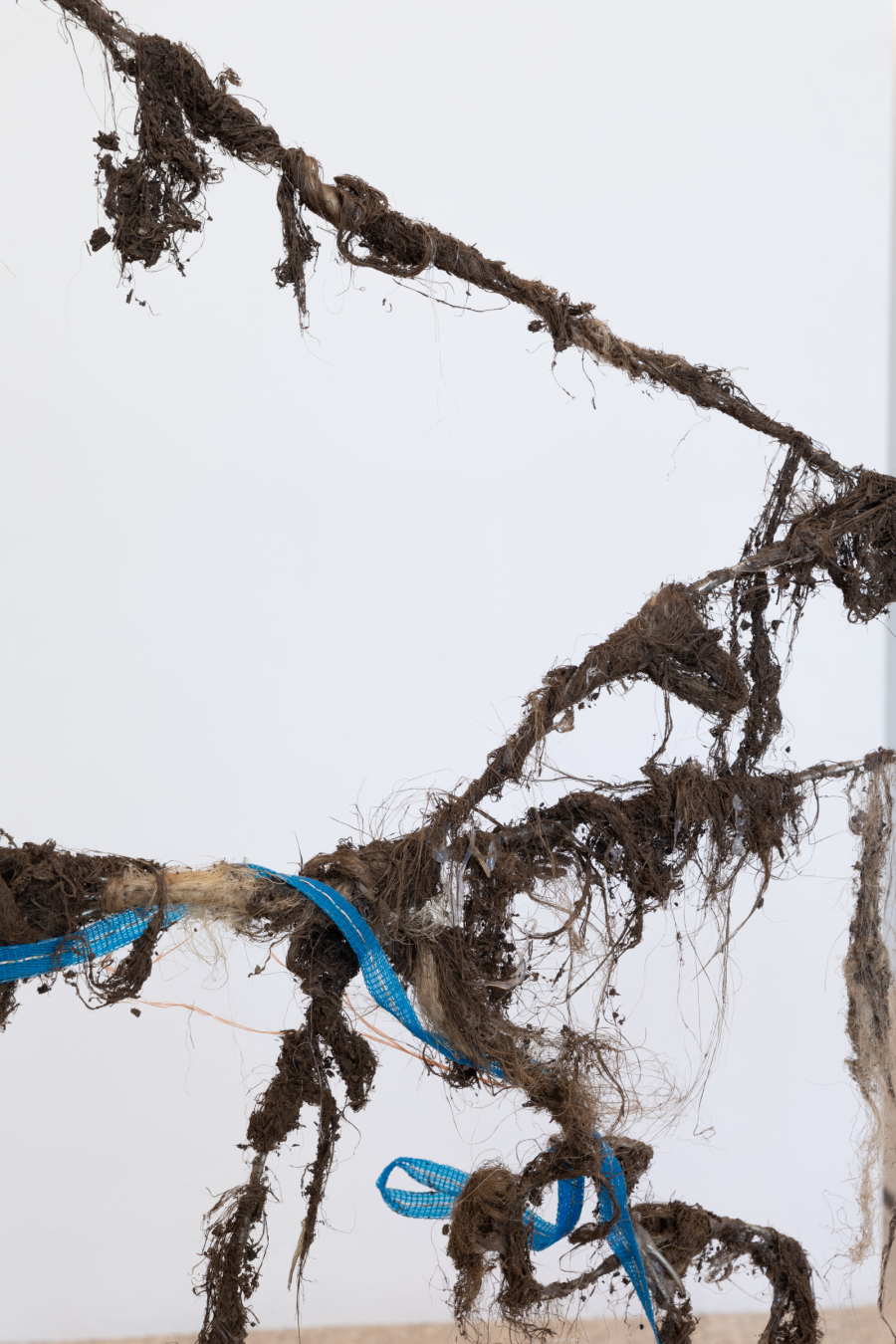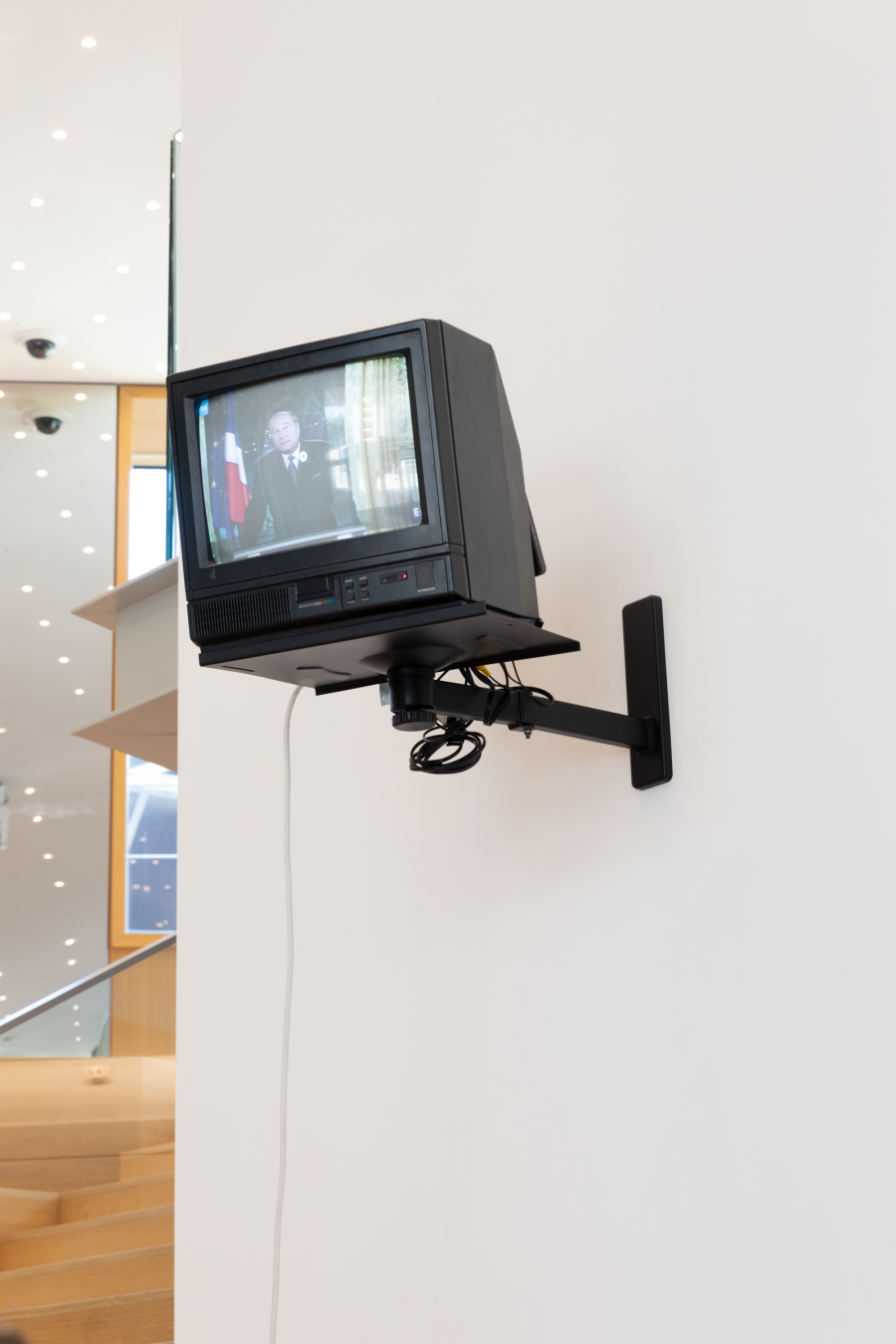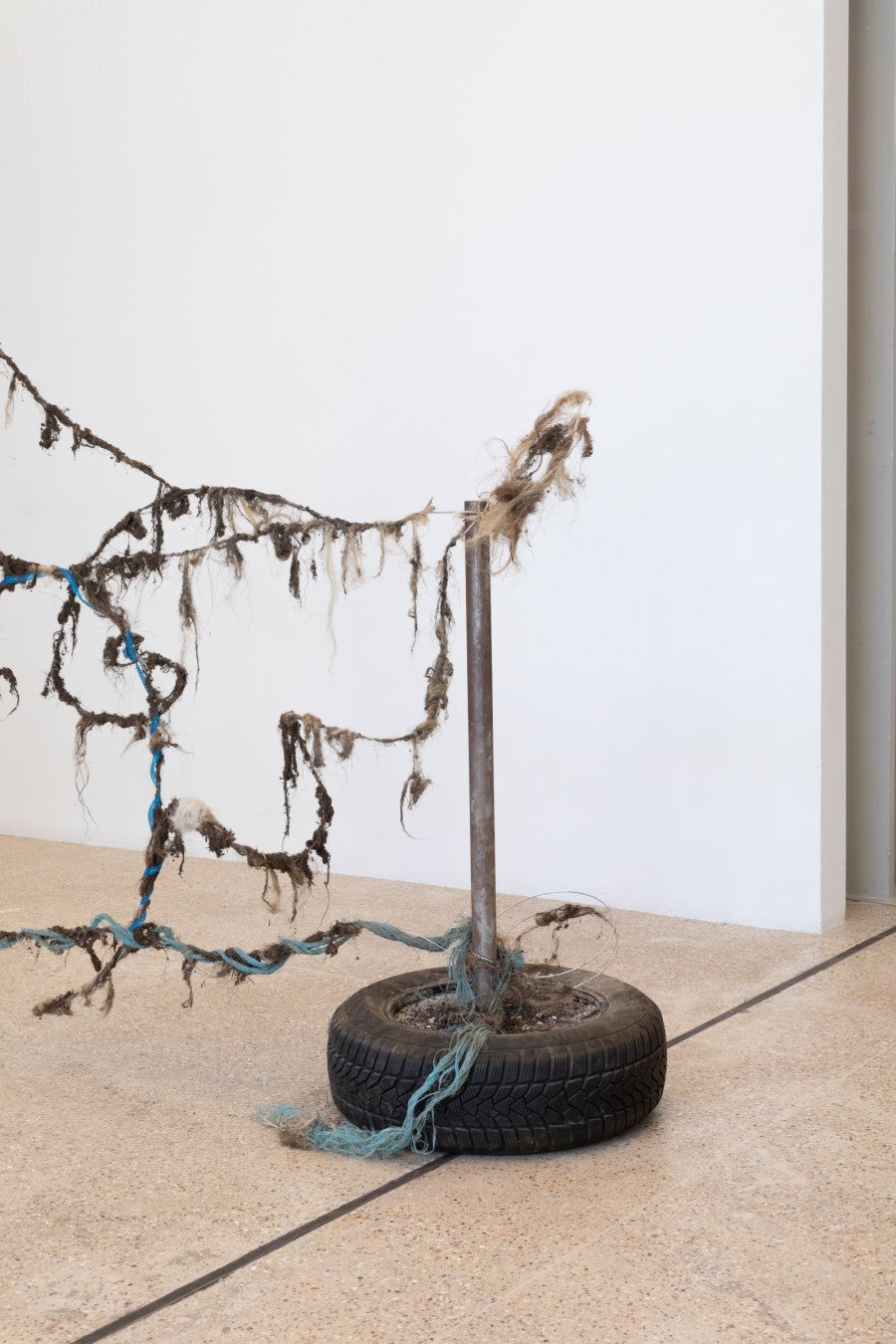La Traverse #3 with Charlotte Durand et Nino Spanu
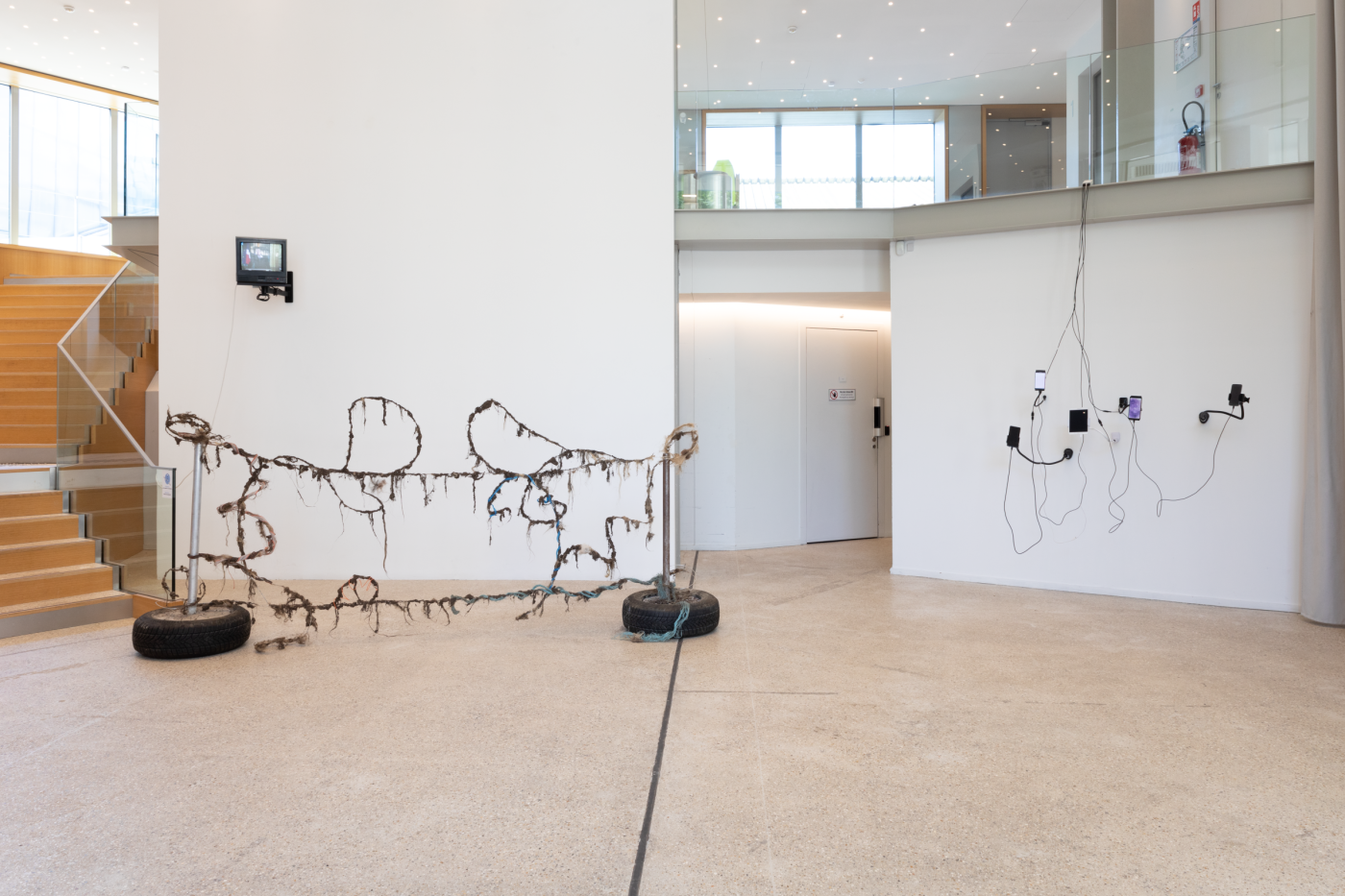
Exhibition in collaboration with École supérieure d'art de Clermont Métropole (ESACM)
With Charlotte Durand and Nino Spanu
Curatorial accompaniment by Chloé Poulain
"Charlotte Durand and Nino Spanu each question the self-portrait in their own way. They deploy it not as an egotistical mirror, but as a tool for investigating questions of belonging, social class and cultural, social and economic performativity.
Nino Spanu's practice is populated by high-tech objects that have become indispensable to our daily lives, technical objects that are no longer just objects in the world, but objects that transform the very architecture of the world. Through them, Nino explores our relationship to time, to our chosen or imposed identity. Through them, he generates reflections on our physical and digital modes of existence.
Attached to the wall by a mechanical arm, a cathode-ray television broadcasts a recording of the 8pm news of December 31, 1997. Superimposed on the banality of the images, audio content from an amateur recording, made simultaneously with the broadcast of the news, lets us hear the cries of Nino, born that very day. The two streams mingle, and we observe on-screen interactions with the television.
when the sound is turned down, the audio bars gradually fade to complete silence. The images scrolling across the screen remain a constant presence, accompanying this domestic scene. For 31DEC97, Nino consciously chose to use a cathode-ray television similar to the one in the maternity room Nino consciously chose to use a cathode-ray television similar to the one in the maternity room where he was born, thus recreating a moment of great intimacy, while at the same time revealing the hollow, impersonal content of this eternal loop of information.
Further on, various screens pulsate an artificial light that is pushed to its maximum and slowly dims until it disappears, replaying the moment when the unsolicited device goes into standby. What they have in common is that they were once demonstration screens, phones and tablets.
The relentless broadcasting of an image in a store window has taken its toll on their pixels, and they now permanently bear the shadow of the content that was broadcast on their surfaces. These phantom images seem to breathe, to beat, like the slow heart of a machine no longer intended for us.
Charlotte Durand borrows from the codes of spectacle and fable to create a meeting point between two social and cultural classes: the rural Auvergne environment in which she grew up and the artistic milieu in which she evolves. Her work explores the ambivalence between the romantic image of a dreamlike countryside and its socio-economic reality. Her work sets up the conditions for a meeting where these entities confront each other and reassess the performativity of their respective codes.
A sculpture made of scrolls of barbed wire stands out in space. Reminiscent of the fences that line fields, it plays on rural clichés to “engulf” the thing with earth, electric fence tape and horsehair. The title CHACHO 2023 comes from the artist's signature, carved directly into the fresh concrete of one of the sculpture's legs. In keeping with the vernacular custom of signing the legs of concrete parasols, Charlotte signed her nickname. With this ironic gesture, she questions traditional notions of the preciousness of art, and challenges the superiority of the artistic and intellectual milieu over working-class and rural environments. This sculpture acts as a self-portrait, the barbed wire having retained through it certain elements that constitute the artist's agentivity, underpinning the difficulty of moving from one milieu to another.
Nino and Charlotte each weave a hollow portrait of our society, exploring the complex dynamics of identity through their respective practices, inviting us to reflect on its shifting boundaries. Their works become witnesses to these movements, artifacts that bear the marks of this constant crossing.
Chloé Poulain, curator
